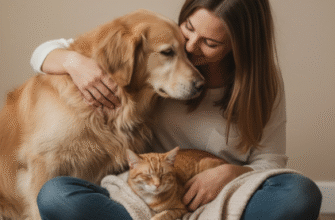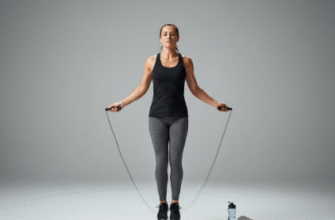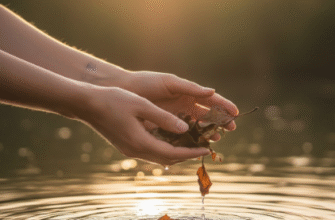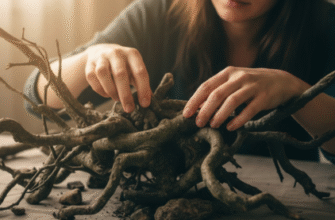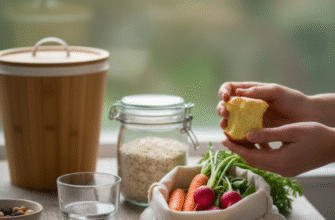That pile of clothes lurking in the back of your wardrobe – the jeans that don’t quite fit, the t-shirts with faded prints, the sweater with that annoying snag? Before you bundle them up for the bin or even the donation centre (where many items sadly still end up as waste), pause for a moment. Locked within those threads is a world of potential, waiting for a little imagination and perhaps a pair of scissors. Upcycling, the art of transforming old or discarded materials into something new and often better, is your ticket to unlocking that potential. It’s more than just recycling; it’s about creative reuse, giving garments a second life that’s both useful and unique.
Why bother, you might ask? Well, the reasons are as varied and colourful as the fabrics themselves. Firstly, it’s a powerful antidote to the fast fashion cycle that churns out mountains of textile waste. Every garment you repurpose is one less item heading towards landfill, reducing your environmental footprint in a tangible way. Secondly, it’s incredibly kind to your wallet. Instead of buying new organisers, bags, or home décor, you can often make exactly what you need using materials you already own – for free! Thirdly, and perhaps most rewardingly, upcycling is a fantastic creative outlet. It lets you inject your personality into everyday items, resulting in pieces that are truly one-of-a-kind, infused with your own story and style. Plus, learning basic sewing or crafting skills along the way is immensely satisfying.
Getting Your Upcycle On: Where to Begin
Starting your upcycling journey doesn’t require a fancy studio or expensive equipment. It begins with a mindset shift: seeing old clothes not as rubbish, but as raw materials. Gather the garments you no longer wear. Wash them thoroughly – this is crucial for pleasant crafting and a clean end product. Examine the fabric. Is it sturdy cotton, soft jersey, warm wool, or durable denim? The type of fabric will often dictate what it can become.
Next, gather some basic tools. You absolutely need a good pair of sharp fabric scissors. Seriously, don’t try hacking away with blunt kitchen scissors; it will only lead to frustration and ragged edges. A tape measure or ruler, fabric chalk or a washable marker for marking lines, and pins are also essential. If you plan on sewing, a basic needle and thread kit is sufficient for many simple projects. A sewing machine speeds things up considerably and opens up more possibilities, but it’s by no means necessary to get started.
Inspiration is everywhere! Browse online platforms like Pinterest or Instagram using hashtags like #upcycledfashion, #clotheshacking, or #sewingrevival. Look at tutorials on YouTube. Sometimes, simply laying out the old garment and thinking about its shape and texture can spark an idea. What do you need around the house? A new cushion cover? A bag for groceries? Some colourful coasters?
Always wash old clothes thoroughly before starting any upcycling project. This removes dirt, odours, and potential allergens. It also preshrinks the fabric, preventing surprises after your new creation is finished and washed. Clean materials are much more pleasant and safer to work with.
No Sewing Machine? No Problem! Easy Upcycling Ideas
You don’t need to be a master tailor to breathe new life into old clothes. Many fantastic projects require minimal or zero sewing.
T-Shirt Yarn (T-Yarn)
Old cotton t-shirts are perfect for making t-yarn. Simply cut the t-shirt horizontally into loops (after removing the hem and neckline/sleeves), stretch the loops so they curl into ‘yarn’, and knot them together. This sturdy, slightly stretchy yarn can then be crocheted, knitted, or woven into baskets, rugs, bathmats, or even jewellery.
No-Sew T-Shirt Tote Bags
Another classic t-shirt transformation! Lay a t-shirt flat. Cut off the sleeves and cut the neckline wider to form handles. Decide on the depth of your bag and cut fringes along the bottom edge through both layers. Then, simply tie the front and back fringe strips together securely with double knots. Voila! A washable, reusable tote bag perfect for shopping or carrying essentials.
Braided Fabric Coasters or Rugs
Cut old clothes (t-shirts, sheets, trousers) into long, even strips. Braid three strips together, adding new strips as you go by tucking or sewing the ends. Coil the braid tightly, stitching it together by hand (or with fabric glue for a no-sew version, though stitching is more durable) as you coil to form a flat circle or oval. Keep going until you reach your desired size for a coaster, placemat, or even a small rug.
Cleaning Rags
Perhaps the simplest upcycle of all! Old t-shirts, towels, flannels, or cotton shirts that are beyond repair can be cut into squares or rectangles. They make fantastic, absorbent rags for cleaning around the house, dusting, or tackling messy jobs in the garage. It’s a far more sustainable option than disposable paper towels.
Stepping Up: Beginner Sewing Projects
If you have a needle and thread (or a sewing machine), a whole new world of possibilities opens up.
Simple Cushion Covers
Old sweaters, flannel shirts, or even sturdy t-shirts can become cosy cushion covers. Cut two identical squares or rectangles from your garment (perhaps centering an interesting pattern or logo). Place them right sides together and sew around three and a half sides. Turn the cover right-side out, stuff with a cushion insert or stuffing, and then hand-sew the final opening closed. Button-down shirts are particularly easy as you can often use the button placket as a ready-made closure!
Drawstring Pouches
The legs of old trousers or the sleeves of shirts are practically pre-made tubes, perfect for drawstring bags. Cut a section of the desired length. Hem the top edge, leaving a channel open for the drawstring. Sew the bottom edge closed. Thread a cord, ribbon, or strip of fabric through the channel, tie the ends, and you have a handy pouch for storing toiletries, shoes, or craft supplies.
Patchwork Creations
Got lots of small scraps? Embrace patchwork! Cut coordinating fabric scraps into squares or simple shapes. Sew them together to create larger pieces of fabric. This patchwork fabric can then be turned into unique coasters, placemats, quilt tops, tote bags, or decorative panels for other items.
Headbands and Scrunchies
Smaller scraps of stretchy or attractive fabric are ideal for making hair accessories. Simple fabric headbands require just a rectangle of fabric folded and sewn into a tube, with elastic added. Scrunchies involve sewing a fabric tube, inserting elastic, and sewing the ends closed. Quick, easy, and great for using up those little bits.
Taking It Further: More Involved Transformations
Once you’re comfortable with basic techniques, you can tackle more ambitious projects that truly transform garments.
Garment Refashioning
This involves altering the structure of clothing. Turn a pair of jeans into a skirt by opening the inseam and adding fabric panels. Combine two or three different t-shirts into one unique top. Shorten a dress into a tunic, using the excess fabric to add details like pockets or ruffles. Add lace or contrasting fabric panels to update a plain shirt. The possibilities are endless, limited only by your imagination and the clothes you have.
Patchwork Quilts or Blankets
A traditional way to use up scraps, quilting involves piecing together fabric shapes (often from old shirts, dresses, and bedding) to create a decorative top layer. This is then layered with batting and a backing fabric and quilted (stitched through all layers) to create a warm and meaningful blanket.
Small Upholstery Projects
Durable fabrics like denim, corduroy, or canvas from old trousers or jackets can be used to recover small items. Think dining chair seats, footstool tops, or homemade notice boards. You’ll need a staple gun for this, but it’s a great way to give furniture a fresh look using reclaimed materials.
Cosy Pet Beds
Old sweaters, blankets, or even sturdy pillowcases can be repurposed into comfy beds for your furry friends. Stuff an old sweater (sew the neck and armholes closed first) or sew fabric pieces into a large pillow shape and fill with shredded fabric scraps or old cushion filling.
Tips for Upcycling Success
Keep these pointers in mind as you embark on your creative reuse adventures:
- Start Simple: Don’t try to tackle a complex quilt as your very first project. Build confidence with easier makes first.
- Plan Ahead (Mostly): While spontaneity is great, having a rough idea of what you want to make helps you cut the fabric efficiently. Measure twice, cut once!
- Embrace Imperfection: Especially when starting out, things might not be perfectly straight or symmetrical. That’s okay! It’s part of the charm of handmade items.
- Use the Right Tools: Sharp scissors are non-negotiable. Using the correct needle for your fabric type (e.g., a ballpoint needle for knits, a denim needle for jeans) makes sewing much easier.
- Save Your Scraps: Even tiny pieces can be used for appliqué, stuffing, or small patchwork projects later on. Keep a scrap bin handy.
- Consider Fabric Properties: Stretchy jersey behaves differently from stiff cotton. Think about whether the fabric’s weight, drape, and durability suit your intended project.
Upcycling old clothes is far more than just a crafty hobby; it’s a sustainable practice, a money-saver, and a deeply rewarding way to express creativity. It challenges us to see value where we might previously have seen waste. So, next time you’re clearing out your closet, look at those old garments with fresh eyes. What hidden potential lies within their fibres? Pick up those scissors, thread that needle, and transform the old into something new, useful, and uniquely yours. You might just surprise yourself with what you can create.

